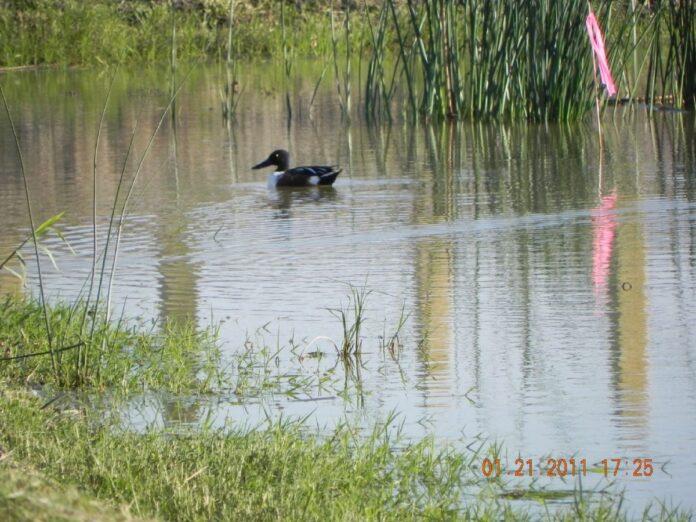SAN BENITO — It’s an environmental project that’s been going on for years.
And it is expected to help the Arroyo Colorado and Laguna Madre in the process.
Thanks to Texas A&M, work on the wetlands located off of FM 509 near Mayfield Road just south of the Arroyo Colorado, will create several opportunities that will eventually contribute to the economy and the environment of the immediate area and beyond.
Earlier this week, city commissioners voted to approve an agreement with Texas A&M University starting phase two of the wetland project.
The project is part of a state plan to help improve the quality of water discharged into the Arroyo Colorado.
“You’re creating habitat immediately for different animals,” said Jaime Flores, coordinator of the Arroyo Colorado Watershed Partnership, a state agency that works to improve the quality of sewer water that cities pump into the arroyo. “It becomes a viewing center for ecotourism.”
Located near the wastewater treatment plant, the site also is expected to become an attractive destination for school field trips where students can learn about conservation.
“There are a lot of educational benefits,” Flores said. “You can change the mindset of these young kids about water conservation and pollution.”
As ecotourism grows in the Valley, so does the need for those activities to occur in San Benito.
With the creation and continued work on these wetlands, Alexander said it will bring more tourists to the area.
The city received a $100,000 grant to fill the remaining ponds. The first phase, the filling of four ponds, was completed in 2009.
Phase two will consist of filling 10 ponds in the same area. That should be completed by 2017.
Patty Alexander, who has worked on the project for several years, said the water will go from the wastewater treatment plant to the ponds where it will be polished and enhanced.
The water will then go to into a drainage ditch, into the Arroyo Colorado, which runs through town, then into the lower Laguna Madre, she said.
San Benito is in the coastal zone, so what is done here makes a difference along the coast.
For the rest of this story and many other EXTRAS, go to our premium site, www.MyValleyStar.com.
Subscribe to it for only $6.99 per month or pur-chase a print subscription and receive the online version free, which in-cludes an electronic ver-sion of the full newspaper and extra photo galleries, links and other informa-tion you can’t find any-where else.
The Laguna Madre is a rarity. It’s one of perhaps six hypersaline (saltier than the ocean) lagoons in the world.
It is perhaps one of the most overlooked natural wonders in North America.
If one stands on its shore and simply gazes at it, the Laguna has no obvious physical attributes to distinguish from any other body of water in the world.
To be appreciated, the Laguna’s unseen side, the life hidden under its surface, must be studied and revealed.
* It is home to approximately 77 percent of the North American wintering population of redhead ducks.
* It accommodates numerous protected (threatened and endangered) species, such as piping and snowy plovers, reddish egret, brown pelican, peregrine falcon, and white-tail hawk.
* For migrating and wintering shorebirds, the wind-tidal flats and barrier island beaches represent the largest continuous expanse of suitable habitats in North America between the northern breeding grounds and more distant wintering grounds in South America.
* Some of the most extensive colonial water bird rookeries in Texas are there. The Laguna Madre accounts for almost 80 percent of all Texas seagrass beds.
* Historically, it is the most productive Texas bay fishery; currently, it is one of the best places for recreational fishing for red drum, black drum and spotted sea trout in North America.
* It has the most extensive wind-tidal flats and clay dunes in North America.
According to the National Park Service.




